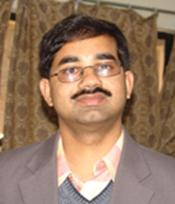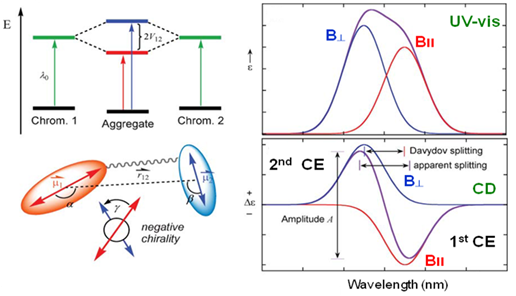










|
Title of Talk Probing Molecular Chirality
Abstract Supramolecular chirogenesis is one of the most important interdisciplinary field to be looked into, because of its occurrences in many natural (DNA double helix, heme proteins, secondary α-helix structure of proteins etc.) and artificial systems. Although, chiroptical spectroscopy such as Circular Dichroism (CD) is inherently sensitive to chirality, it has not enjoyed tremendous use as a method for stereochemical determinations, mainly because the results of CD analysis are empirical. Exciton Coupled Circular Dichroism (ECCD) is a nonempirical spectroscopic method that is based on detecting the through-space exciton interaction between helically orientated independently conjugated chromophores. The relative orientation of the two chromophores in space results in a predicted sign of the couplet; i.e., a clockwise orientation of two interacting chromophores yields a positive couplet and vice versa. Therefore, the challenge lies in orienting two or more chromophoric receptor groups in a chiral fashion as a direct result of the binding of a chiral compound and extrapolating the chirality of the bound compound from the ECCD spectra. Since the observed sign of the couplet is a direct consequence of the relative position of the chromophores, the assignment of chirality is nonempirical. This presentation will showcase some of our recent research activity along the line.
References: 1. S. Brahma, S. A. Ikbal, S P Rath Inorg. Chem. 2013, 52, 0000. 2. S. Brahma, S. A. Ikbal, S P Rath Inorg. Chem. 2013, 52, 0000. 3. S. Brahma, S. A. Ikbal, S. P. Rath Chem. Commun. 2012, 48, 4070. (Invited article) |
|
Sankar Prasad Rath, Associate Professor
Department of Chemistry, Indian Institute of Technology Kanpur e-mail: sprath@iitk.ac.in
Profile. Sankar Prasad Rath received his B.Sc and M.Sc from the Calcutta University in 1992 and 1994, respectively, and did his Ph.D in 1999 working in the laboratory of Professor Animesh Chakravorty at the Department of Inorganic Chemistry at IACS, Kolkata. He was National Institute of Health post-doctoral fellow working with Professor Alan L. Balch at the University of California, Davis, USA before joining the faculty at IIT Kanpur in December 2004. He is currently an Associate Professor since May 2009. He is a recipient of Alexander von Humboldt Fellowship and P. K. Kelkar Research Fellowship of IIT Kanpur. His current research interests all involve in some way a desire to understand the structure-function-reactivity relationships of heme proteins (both mono and multi-heme centers) by the study of model hemes. Dr. Rath is also involved working on the binding and activation of small molecules, electron transfer and probing molecular chirality using Exciton Coupled Circular Dichroism (ECCD).
Selected Publications 1. S. K. Ghosh, S. Bhowmik, S. P. Rath Chem. Eur. J. 2013, 19, 0000. 2. S. Bhowmik, S. K. Ghosh, S. P. Rath Chem. Eur. J. 2013, 19, 13732. 3. S. Bhowmik, S. K. Ghosh, S. P. Rath Chem. Eur. J. 2012, 18, 13025. 4. A. Chaudhary, S. P. Rath Chem. Eur. J. 2012, 18, 7404. 5. S. Brahma, S. A. Ikbal, S. P. Rath Chem. Commun. 2012, 48, 4070. 6. S. Bhowmik, S. K. Ghosh, S. P. Rath Chem. Commun. 2011, 47, 4790. 7. A. Chaudhary, S. P. Rath Chem. Eur. J. 2011, 17, 11478. 8. S. K. Ghosh, S. P. Rath J. Am. Chem. Soc. 2010, 132, 17983 |

